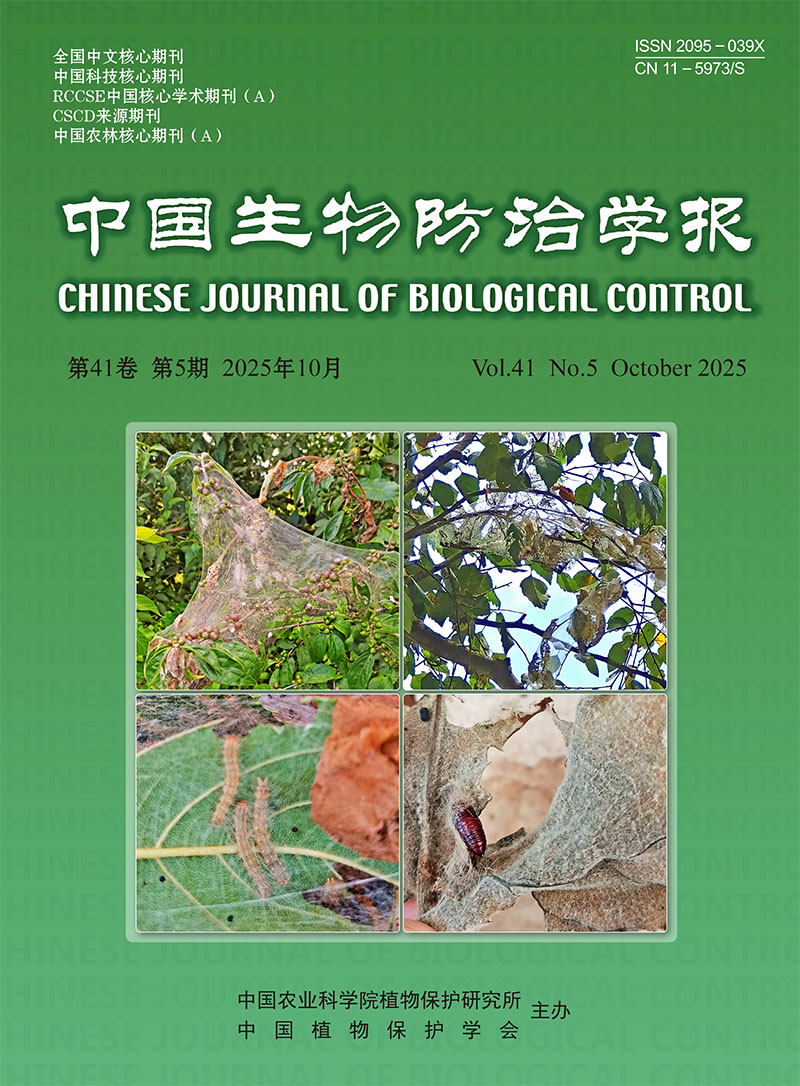|
|
Biological Activities of Seven Plant Essential Oils against Panonychus ulmi and GC-MS Analysis of Peppermint Essential Oil Components
ZHANG Kun, WANG Kaile, ZHANG Pengjiu, LIU Zhongfang, YANG Jing, FAN Jianbin, ZHAO Jinyu, FAN Renjun, GAO Yue
Chinese Journal of Biological Control
2023, 39 (5):
1133-1142.
DOI: 10.16409/j.cnki.2095-039x.2023.01.037
In order to screen new and green plant-derived acaricides, seven plant essential oils were extracted by steam distillation. The contact killing, fumigation and repellent activities of the essential oils against Panonychus ulmi were determined by Potter spray method, fumigation method and medicine film method. The peppermint essential oil with strong biological activity was screened out, and the chemical components of the peppermint essential oil were identified and analyzed by gas chromatography-mass spectrometry (GC-MS). The results showed that the LC50 of the peppermint essential oil at 12, 24, and 48 h post spray were 2.13, 0.83, and 0.77 g/L, respectively. The LC50 at 12, 24, and 48 h post fumigation were 382.86, 73.89, and 16.08 μL/L, respectively. The results indicate that the essential oil has strong contact killing and fumigation activities against P. ulmi. Finally, at 24 h post repellent treatment, the peppermint essential oil repelled 77.82% of P. ulmi, which was at grade IV. The peppermint essential oil was analyzed by GC-MS, and a total of 34 chemical components were identified. The detected chemical components accounted for 99.67% of the total essential oil content. The main components were menthol (32.16%), limonene (16.44%), 4-isopropyltoluene (11.32%), 3-carene (10.27%), diethyl malonate (9.57%) and menthone (3.91%). These results show that the peppermint essential oil has strong biological activity against P. ulmi, which provides a scientific basis for the further development of plant-derived acaricides.
Reference |
Related Articles |
Metrics |
Comments(0)
|
|
